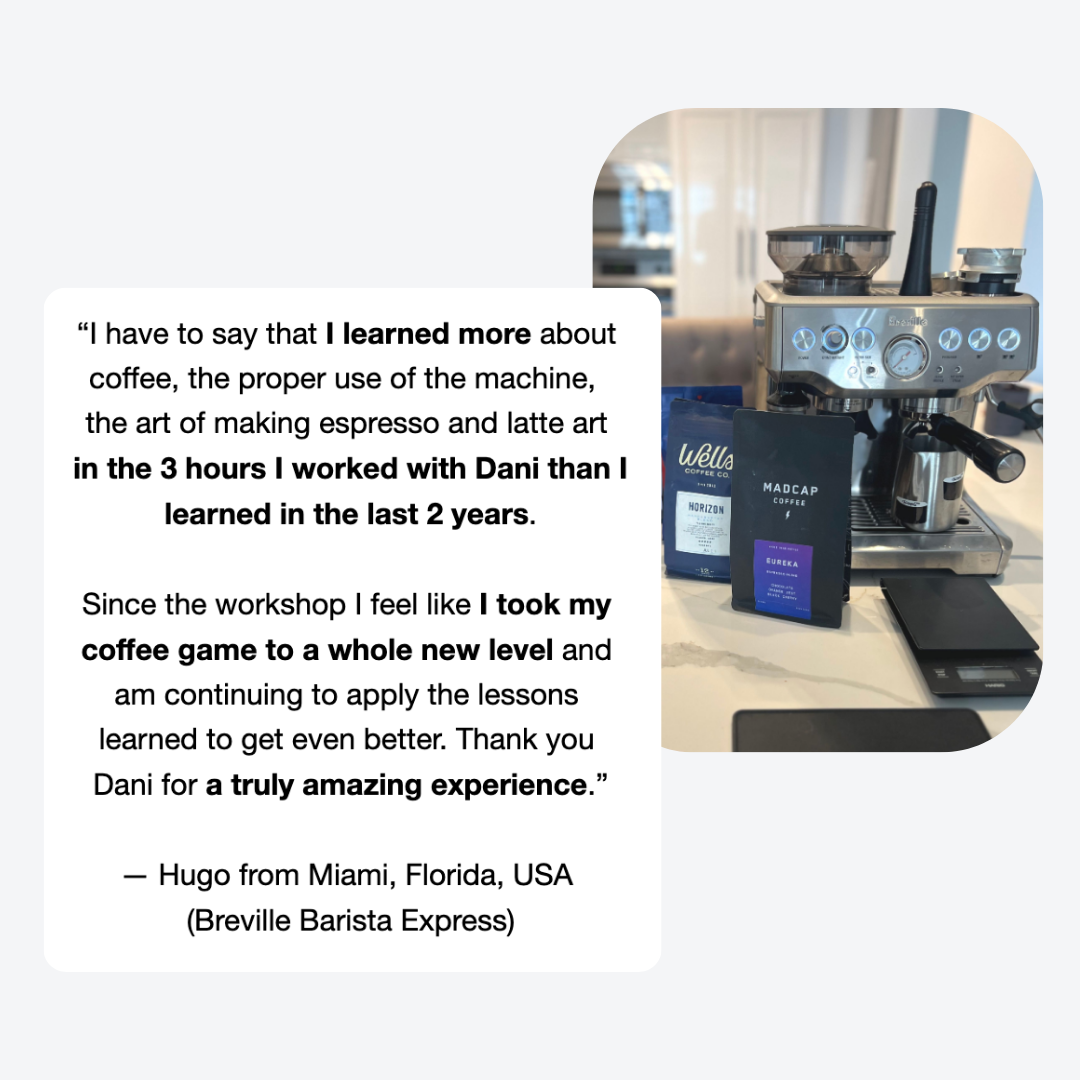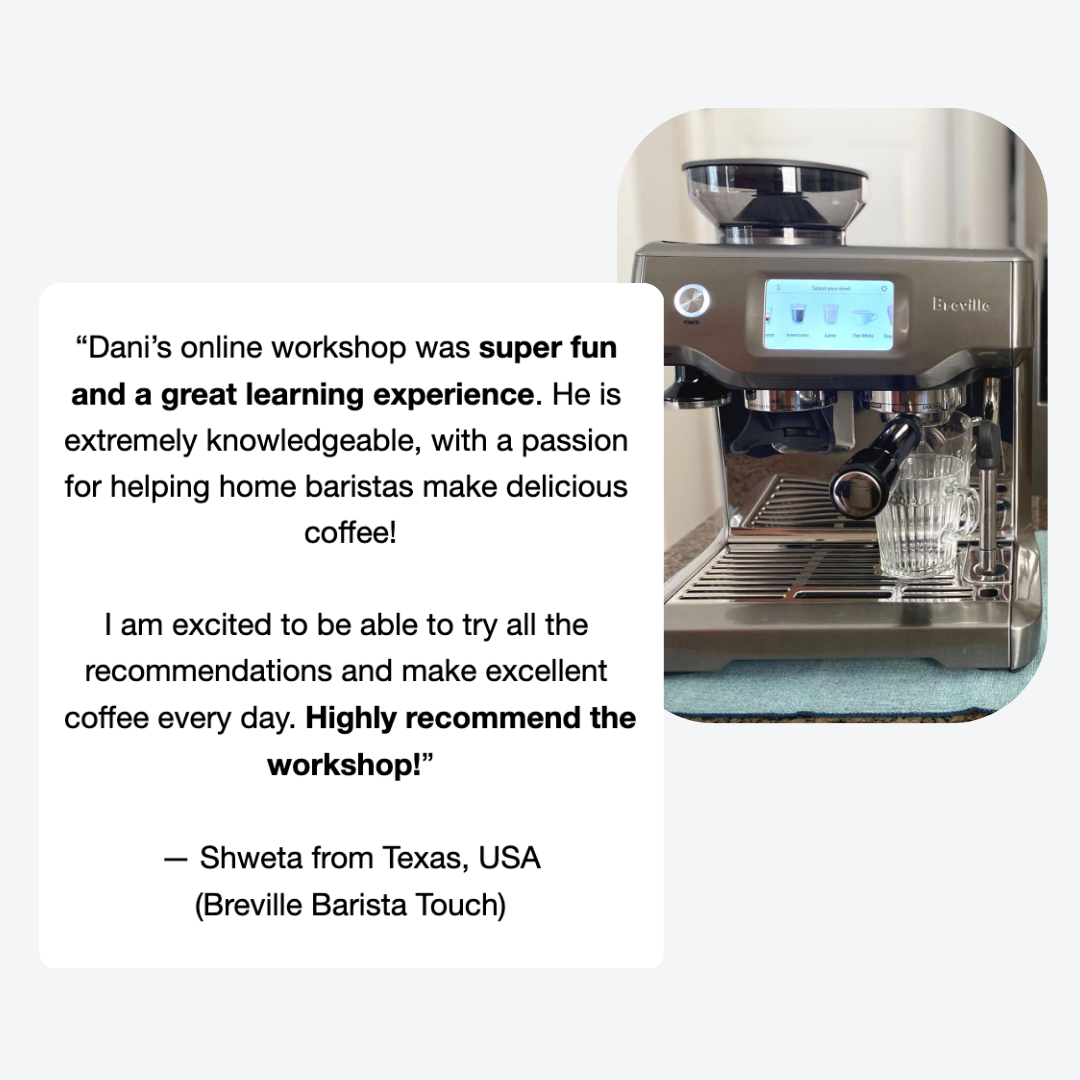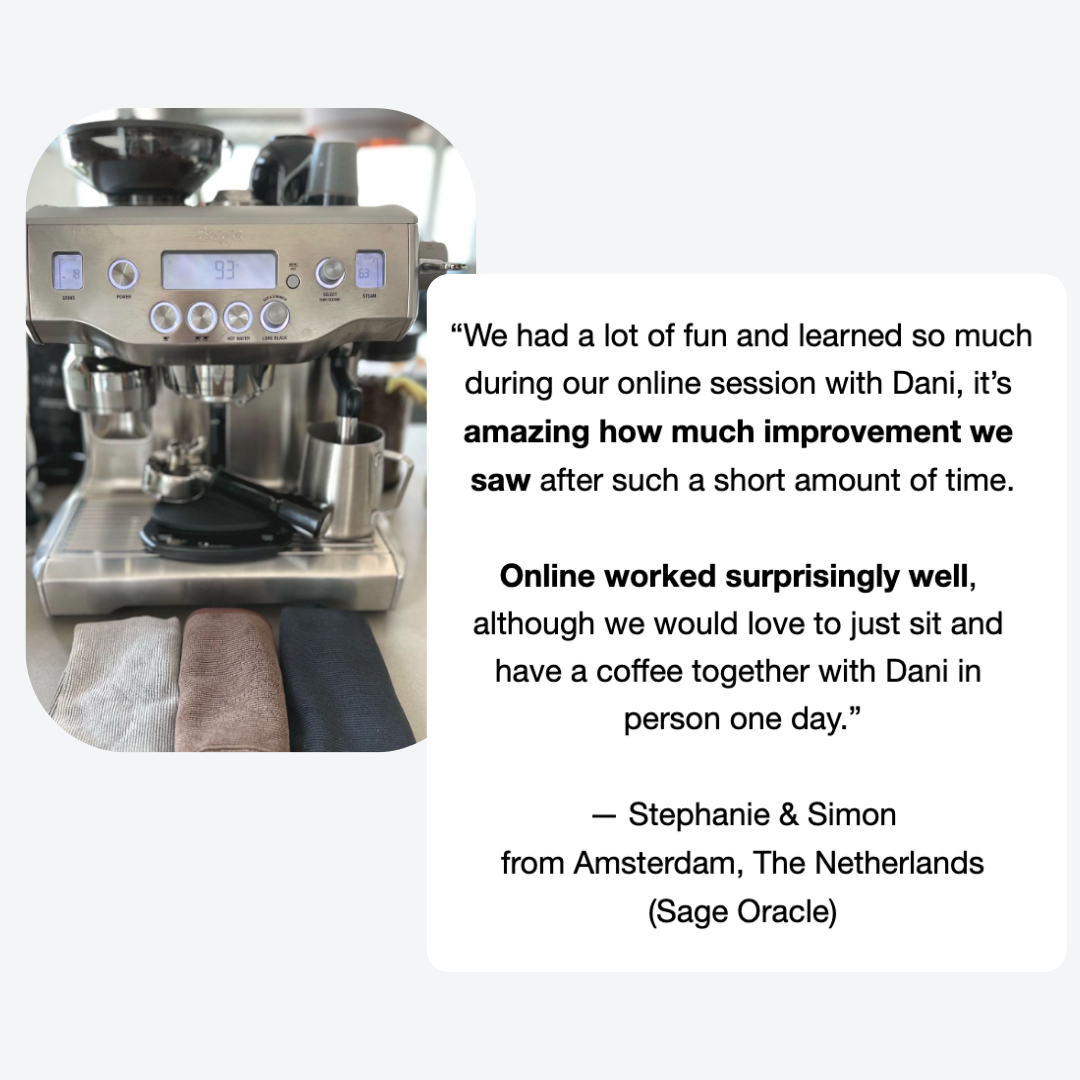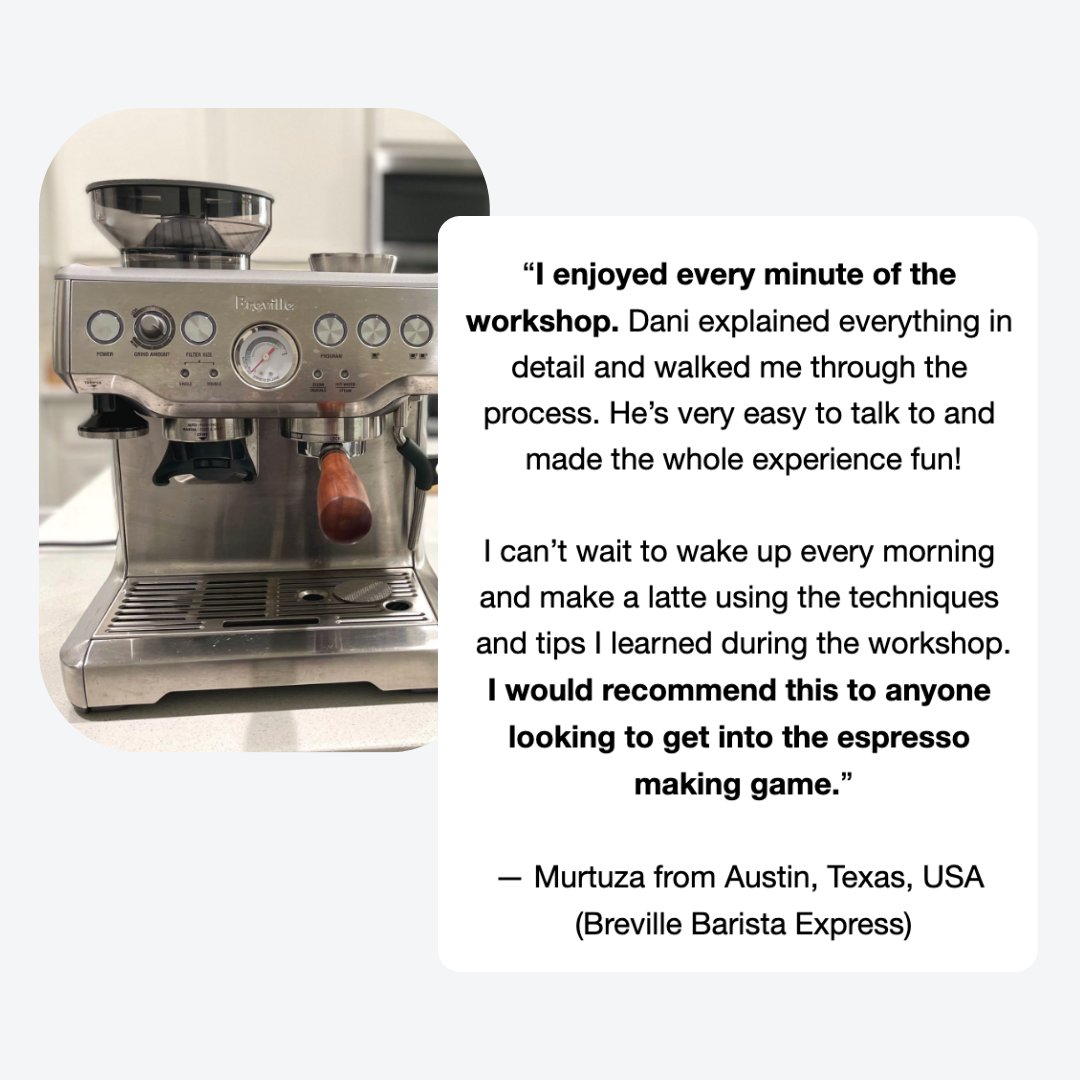What is the best grind size for the Sage and Breville home espresso machines with a built-in grinder?
Important considerations when looking for the best grind size
This is by far one of the most frequent questions I get asked on social media and my answer is: it depends!
Please keep in mind that making espresso at home with a new bag of coffee beans always involves a bit of trial and error. You’ll most likely have to try 2 or 3 different grind sizes in order to get to the espresso you’re looking for. And, even when you’re working with the same coffee, the grind size will differ from when that coffee is freshly roasted (1 - 2 weeks from roast date) to when the coffee has been roasted for 3 - 4 weeks already.
Read on for a few simple steps that I hope will help you find the best grind size when making coffee on a Sage or Breville home espresso machine with a built-in grinder.
Adjust the side dial
You can start with changing the grind size by adjusting the side dial/wheel. The settings are easily adjustable by scrolling the dial:
to the left (small numbers) to grind finer
to the right (large numbers) to grind coarser
With a grind setting that is too coarse, you will under-extract the coffee
An under-extracted espresso is underwhelming, its sweetness is low and the acidity often high and overpowering. It also tends to have nutty, unpleasant flavors, followed by an empty finish/aftertaste. In order to improve the taste of the espresso, you need to try and pull more sweetness and flavor from the coffee. You can do so by adjusting your grinder to a finer grind size.
With a grind setting that is too fine, you risk over-extracting the coffee
An over-extracted espresso tends to be associated with bitterness and a dry mouthfeel. In order to correct the extraction, you need to allow a faster flow of water through the coffee, and therefore adjust your grinder to a coarser grind size.
Adjust the inner burr
Some coffee beans will require a finer grind size, in order to achieve a higher extraction and, with that, a better tasting espresso.
If you reached the finest setting on the side dial, but your espresso still shows signs of under-extraction (fast flow, poor crema, low to no sweetness), then you may consider to grind even finer by adjusting the inner burr.
Important considerations when looking for the best grind size
Your espresso recipe
How much ground coffee are you using? In my case, I use 17.0 to 17.5 grams of coffee. Changing the dose also affects how quickly the water flows through the coffee.
For example, a high dose will have more resistance to the water flow, which means a coarser grind size is required. By going coarser, you are allowing a faster flow and thus you avoid over-extracting the coffee.
The type of coffee beans
The country of harvest, altitude and processing (washed, honey, natural etc.) of the coffee beans you’re using will all have an impact on the grind size too.
The roast style
What I found over time, from working with many of these home espresso machines, is that their built-in grinder works best with medium and medium-dark roasts. While I don’t discourage you from experimenting and trying lighter roasts, the dial in process may be finicky until you pull an espresso which is balanced and doesn’t taste overly acidic.
Medium and medium-dark roasts will go for a slightly coarse grind setting
A lighter roast will require you to grind finer, in order to increase solubility
I hope you find these tips helpful and, if you’d like to dive deeper, you may consider our espresso and latte art home barista workshops. Happy brewing!
P.S. Did you find this article helpful? Please consider supporting our work for just the price of a cup of coffee here. Thank you so much!
And, if you enjoyed reading this article, you might find the one here interesting too – How to adjust the inner burr and grind finer on the Sage or Breville home espresso machines












